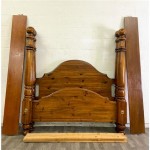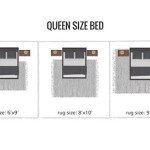Using Metal Roofing for Raised Garden Beds
Metal roofing offers a durable and versatile material for constructing raised garden beds. Its inherent strength, weather resistance, and longevity make it an attractive alternative to traditional wood or plastic options. This article explores the benefits, considerations, and construction process involved in using metal roofing for raised garden beds.
One of the primary advantages of metal roofing is its durability. Galvanized steel, a common choice, resists rust and corrosion, providing a long-lasting structure. Unlike wood, which can rot and decompose over time, metal roofing maintains its structural integrity for years, minimizing the need for replacement or repair.
Weather resistance is another key benefit. Metal roofing withstands rain, snow, and sun exposure without significant degradation. This resilience ensures the garden bed remains intact through various weather conditions, protecting the soil and plants within.
The relative ease of installation contributes to the appeal of metal roofing. Pre-cut panels are available in various sizes, simplifying the construction process. Furthermore, the lightweight nature of metal roofing makes it easier to handle and maneuver compared to heavier materials like concrete blocks or stone.
Cost-effectiveness is a significant factor for many gardeners. While the initial cost of metal roofing might be slightly higher than some other materials, its longevity reduces the long-term expense. The reduced need for replacement or repair translates to savings over the lifespan of the garden bed.
Aesthetics also play a role in garden design. Metal roofing comes in a variety of colors and finishes, allowing for customization and integration with existing landscaping. The clean lines and modern look of metal can complement various garden styles.
Before embarking on construction, specific considerations should be addressed. The type of metal roofing is crucial. Galvanized steel is a popular option due to its rust resistance. Aluminum offers lightness and corrosion resistance, while Corten steel develops a protective rust layer that adds a unique aesthetic.
Soil temperature is another important factor. Metal can absorb and radiate heat, potentially impacting the soil temperature within the raised bed. In hotter climates, this can lead to overheating. Strategies to mitigate this include painting the metal with a light-reflective color or adding a layer of insulation to the interior of the bed.
Proper drainage is essential for healthy plant growth. Ensure the design incorporates drainage holes to prevent waterlogging. This can be achieved by drilling holes in the metal panels or incorporating drainage channels within the bed's structure.
The size and shape of the raised bed should be determined based on the available space and intended plantings. Metal roofing can be easily cut and shaped to create custom designs, allowing for flexibility in garden layout.
The construction process typically involves several steps. First, gather the necessary materials, including metal roofing panels, fasteners, corner braces, and safety equipment. Measure and cut the panels to the desired dimensions, ensuring accurate cuts for a proper fit.
Assemble the panels using appropriate fasteners, such as screws or rivets. Corner braces provide additional stability and reinforce the structure. Ensure all connections are secure to create a sturdy and long-lasting raised bed.
Prepare the site for the raised bed by leveling the ground and removing any debris. Place the assembled bed in the desired location and secure it if necessary. Line the interior with landscape fabric to prevent soil erosion and weed growth.
Fill the bed with a suitable soil mix tailored to the specific plants being grown. Consider adding organic matter, such as compost or manure, to improve soil fertility and drainage. Water the soil thoroughly after filling the bed.
Regular maintenance contributes to the longevity of the raised bed. Inspect the structure periodically for any signs of damage or corrosion. Address any issues promptly to prevent further deterioration. Clean the metal surfaces as needed to remove dirt and debris.
Metal roofing offers a practical and aesthetically pleasing solution for creating raised garden beds. Its durability, weather resistance, and ease of installation make it a worthwhile investment for gardeners seeking a long-lasting and versatile option.
By carefully considering the type of metal, addressing soil temperature and drainage concerns, and following proper construction techniques, gardeners can successfully utilize metal roofing to create thriving and attractive raised garden beds.

How To Make A Raised Garden Bed Last 25 Years With Plans Ptr

How To Make A Raised Garden Bed Last 25 Years With Plans Ptr

How To Build A Metal Raised Garden Bed Mk Library

How To Make A Raised Bed From Metal Roofing Materials Diy Growing The Home Garden

Galvanized Steel Raised Garden Beds Plans Tutorial Growfully

How To Build A Metal Raised Garden Bed Mk Library

More Raised Bed Design Ideas Finegardening

Building Our Raised Beds The Prairie Homestead

12 Diy Galvanized Metal Planters With Tutorials Jardin Surélevé Potager Idées

How To Make A Raised Garden Bed Last 25 Years With Plans Ptr







